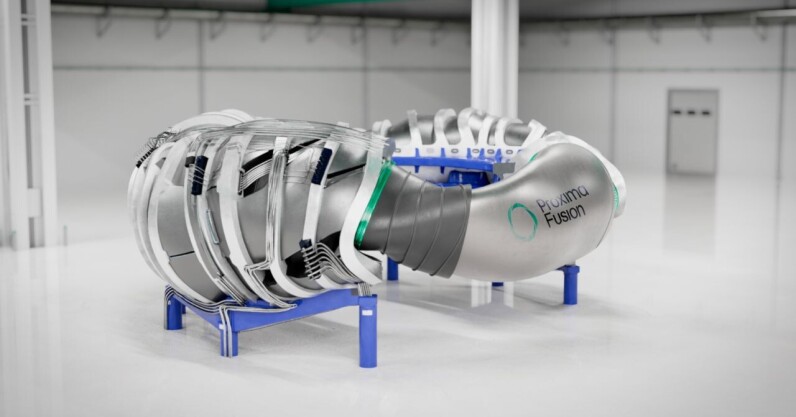Proxima Fusion Unveils 'World's Most Viable' Fusion Reactor Design

- Proxima Fusion unveils Stellaris, a fusion energy reactor design
- Stellaris is a quasi-isodynamic (QI) stellarator with high-temperature superconducting (HTS) magnets
- The reactor is designed to operate in continuous mode and be intrinsically stable
- Stellaris builds on the Wendelstein 7-X, the world's largest stellarator
- Proxima aims to complete the first demonstrator, Alpha, within six years
- Alpha will be the first-ever fusion device demonstrating net energy production in a steady state
- Stellaris is designed to generate more power per unit volume than any previous stellarator
Introduction to Stellaris
Proxima Fusion, a German startup, has unveiled a fusion energy reactor design called Stellaris, which it believes offers the quickest route to commercially viable fusion power. The reactor is a quasi-isodynamic (QI) stellarator with high-temperature superconducting (HTS) magnets, designed to operate in continuous mode and be intrinsically stable.
The Stellaris design builds on the Wendelstein 7-X, the world's largest stellarator, located at the Max Planck Institute for Plasma Physics in Germany. While Wendelstein 7-X was developed for research, Stellaris could one day power the grid.
Advantages of Stellaris
Stellarators have several advantages over their more popular cousin, the tokamak. They need less power to operate and are more stable. Their biggest drawback is complexity — stellarators are notoriously hard to design and build. However, advances in computational power are closing the gap.
Proxima uses AI supercomputers to rapidly iterate the best fusion reactor designs based on key parameters like cost, material availability, and efficiency. This approach allows the company to jump straight into building a functioning demonstrator, rather than having to build multiple prototypes.
Construction and Operation
Proxima aims to bring the Stellaris design to life with its first demonstrator — Alpha — slated for completion in just six years. Alpha will be the first-ever fusion device demonstrating net energy production in a steady state. The machine will lay the foundation for Proxima's first 1GW fusion reactor, which the company hopes will power up sometime in the 2030s.
Stellaris is designed to generate more power per unit volume than any previous stellarator. HTS magnets create stronger magnetic fields, allowing for smaller, faster-to-build, and more efficient reactors. This approach also reduces costs in both construction and operation. Stellaris uses only existing materials, making it buildable with today's supply chains.